Over the past two years, I’ve interviewed more than 100 world-class performers for my podcast, The Tim Ferriss Show. The guests range from super-celebs (Arnold Schwarzenegger, Jamie Foxx) and athletes (icons of powerlifting, gymnastics, and surfing) to legendary Special Operations commanders and black-market biochemists. For most of my guests, it’s the first time they’ve agreed to a two-to-three-hour interview. Nearly 100 million downloads and two Best of iTunes inclusions later, I’m still learning more each month than I did in some previous years.
What makes the show different is a relentless focus on actionable tactics and details. This is reflected in the questions: What do these people do in the first 60 minutes of each morning? What do their exact workout routines look like and why? What are the biggest wastes of time for novices in their field? What supplements do they take on a daily basis?
My approach is unique because I don’t look at myself as an interviewer. I look at myself as an experimenter. If I can’t personally test something and replicate the results in the messy reality of everyday life, I’m not interested.
The following advice is adapted from Tools of Titans, my soon-to-be-published book on the best tactics, routines, and insider tricks from podcast guests. All the strategies have been vetted, explored, and applied to my own life in some fashion. Some of their recommendations blew my mind. For instance, at age 39, I’m now stronger and more flexible than I was at 25. (This wasn’t the case at age 35, before I launched the podcast.) It’s bonkers.
The Tim Ferriss Show, perhaps more than anything else, has taught me to question my assumptions about everything. Did you know that you can train slow-twitch muscles to improve power? That strengthening your gluteus medius can solve many of your lower-body problems? That Olympic coaches often recommend goat-whey protein and a particular focus on the mid-traps?
There's No Strong Like Gymnast Strong
One podcast guest changed my body like no other: Christopher Sommer, founder of GymnasticBodies, who spent 20 years coaching the U.S. national gymnastics team. In less than eight weeks following his protocols, I saw massive improvement in areas I’d completely given up on. Try the following and you’ll realize that gymnasts use muscles you didn’t even know you had.
J-Curl
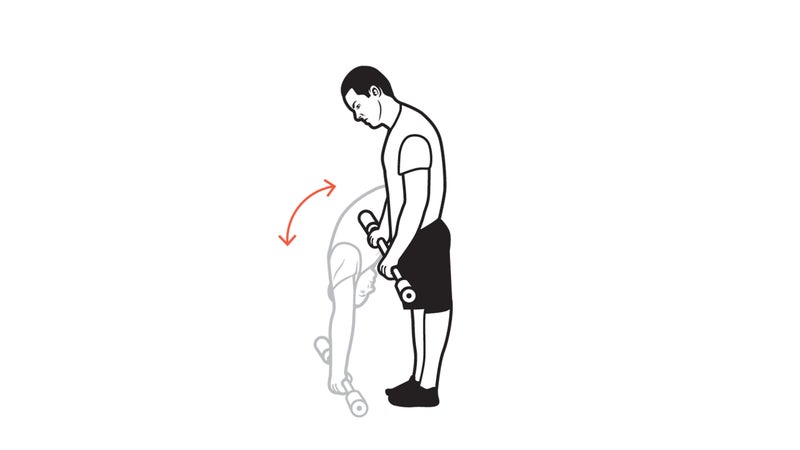
This Book Will Change Your Life
Expert advice on happiness, meaning, and secrets to successThink of this as a controlled, slowly rounded straight-legged deadlift, but with light weights. It can kick-start stubborn thoracic, or mid-back, mobility while teaching you to use your hamstrings.
- Begin by standing up straight, legs locked, holding a bar waist high with your arms shoulder width apart.
- With your chin tucked tightly against your chest, slowly bend over, one vertebra at a time from the neck down. Keep your arms straight and the bar close to your legs. Lower until you can’t stretch any farther. As you become more flexible, stand on a box, with the goal of reaching your wrists below your toes.
- Slowly stand back up again, one vertebra at a time, keeping your chin tucked—it should be the last thing to come up. Aim for ten reps.
Dislocates
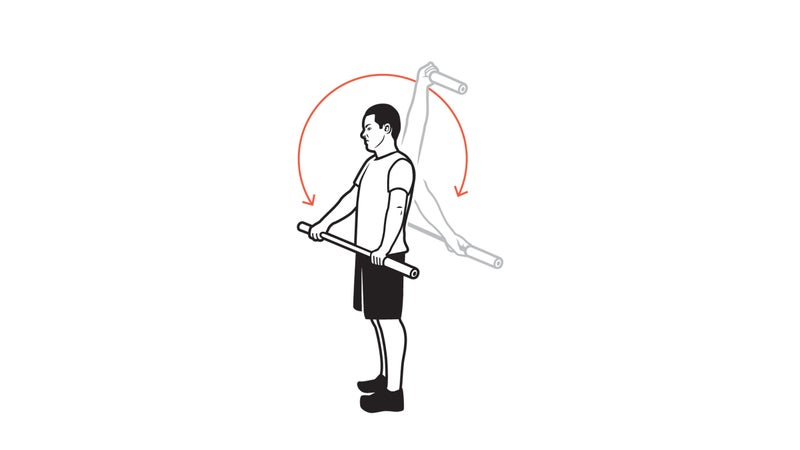
These are outstanding for shoulder and pec mobility. Perform them at the end of a workout, when your shoulders are warmed up.
- Start by holding a lightweight bar waist high with an overhand grip and your arms double shoulder width apart.
- Keeping your arms straight, slowly raise the bar above your head and then back behind you, ending with the bar against the back of your legs. Don’t arch your lower back.
- Bring the bar back up and around. Repeat five to ten times.
Hinge Rows
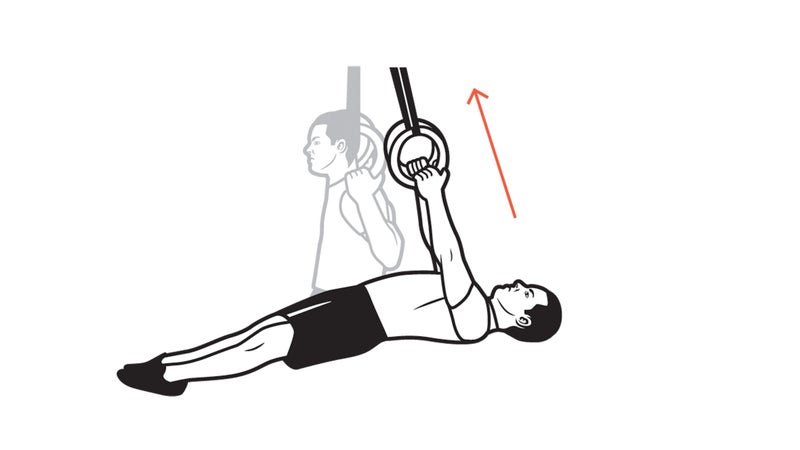
This is an excellent finishing move for the mid-traps (extremely important for handstands and just about everything in gymnastics) and external rotator muscles in the shoulders. It also irritates the shoulders less than most other variations I’ve tried. Visualize it as popping up like Dracula in a coffin, then hitting a double biceps pose. The catch: your hands are holding rings the entire time.
- Set up a pair of rings to hang about a foot above your head when you’re sitting on the floor.
- While sitting on the floor, grab the rings, lay back, and lift your hips off the ground, keeping your heels dug in. Focus on making your body (head to heels) straight.
- Sit up until your head is between the rings. The bend at your waist and elbows should be about 90 degrees.
- Slowly lower yourself back down. Repeat five times.
Every Athlete Needs a Vibrator
Specifically, the plug-in version of the Hitachi Magic Wand—but not for what you’re thinking (though you can do that, too). The device, when set on high, delivers the precise hertz most helpful for relaxing hypertonic (chronically tensed) muscles, at least according to the Russian medical-massage specialist who made this recommendation. Place the wand on the belly of a muscle (not where it connects to the tendons) for 20 to 30 seconds, which is often all it takes. It’s incredibly helpful for anyone constantly managing tight muscles. Pro tip: if you have a stiff upper back or neck, try the wand on the suboccipital muscles, at the base of your skull.
Use Instagram to Defeat Your Lesser Self
This concept was introduced to me by Noah Kagan, the tech entrepreneur behind the web-tools company AppSumo. He also once gained 40 pounds of muscle in six months. Among Noah’s tricks is to follow people who load his feed with images and video that obliterate B.S. reasons for copping out. Here are some of my favorites.
You think: “I’m too old.”
@matstrane: This 53-year-old makes me cringe for complaining about my age. He started training when he was 48.
You think: “I’m not built for strength.”
@bgirlmislee: This svelte female breakdancer hits power moves that make most men throw in the towel (e.g., one-armed hopping handstands).
You think: “I’m too muscular to be flexible.”
@jujimufu: This seemingly muscle-bound “anabolic acrobat” performs capoeira aerials, full splits, and other limb-bending craziness. Strong and flexible are not mutually exclusive.
You think: “I’m not prepared to be a human guinea pig!”
@timferriss: This guy is totally nuts and takes pictures of ill-advised experiments. Don’t listen to him.
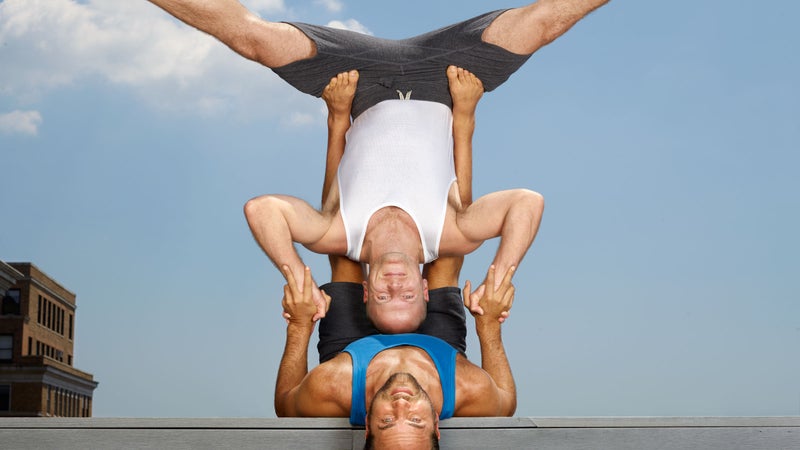
Fly Like a Yogi
In 2015, at a dinner party at a friend’s house in L.A., I ended up seated next to Jason Nemer, the gregarious cofounder of AcroYoga. I mentioned that my back hurt, and he offered to “fly” me. Having no idea what that was, I agreed, and Jason got on the floor and proceeded to loft me into the air with his feet and spin me around for about 15 minutes. Two things worth noting: I weigh about 180 pounds, and Jason’s around 160 (he’s done the same with someone 280 and six-foot-seven); and my back no longer hurt afterward.
In the past, I’d always been repelled by yoga: too much mumbo jumbo, too little excitement. Fortunately, AcroYoga is a different beast altogether. You’ll endure the occasional Sanskrit or whatnot, but it’s otherwise like a combination of body-weight strength training, dance (the “base” is the lead, and the “flier” follows), roughhousing (lots of wipeouts), and hip rehab (after ten sessions, my lower body felt ten years younger).
It’s also the ultimate movement-based Prozac. In a culture where close physical touch among friends (or exercise partners!) is taboo, this allows you to have a sensual but not sexual connection with someone while getting stronger and more flexible. I laugh at least 50 percent of the time during sessions. It’s a wonderful balance to the rest of my training. If we’re serious all the time, we’ll flame out before we get the truly serious work done.
Try out this foundational AcroYoga exercise, the hippy twist.
- The base lies on his back, arms and legs in the air, and elbows and knees slightly bent.
- The flier lowers himself over the base into a downward-dog position, placing his hands just above the base’s shoulders.
- The base places his feet on the hip crease of the flier and his hands underneath the flier’s shoulders, then lifts the flier into the air. The flier holds his arms behind his back and touches the soles of his feet together like a butterfly stretch. Keep the feet below the hips.
- The base twists the flier at the waist by slowly bending and straightening one leg at a time.
- To complete the sequence, the base slowly lowers the flier back down into a downward-dog position.
Heat Is the New Black
Or rather, you can use hyperthermic conditioning to substantially improve athletic endurance. Just ask Rhonda Patrick, a biochemist who worked with acclaimed scientist Bruce Ames at the Children’s Hospital Oakland Research Institute in California. She espoused the benefits of (carefully controlled!) self-cooking on my show in 2014, pointing to one study’s findings: a 30-minute post-workout sauna session at around 190 degrees, two times a week for three weeks, increased the time it took for participants to run until exhaustion by 32 percent compared with a baseline. How does it work? Heat acclimatization increases blood flow and plasma volume while causing you to start sweating at a lower core temperature, thus boosting your ability to regulate cooling. Saunas have also been shown to increase growth-hormone levels and spur a massive release of prolactin, which, among other things, plays a role in wound healing.
I take a post-workout sauna (or hot bath, which offers similar benefits) five to seven times a week for 20 to 30 minutes, which is long enough to significantly elevate my heart rate. I usually listen to an audiobook (try The Graveyard Book, by Neil Gaiman) and push a few minutes past the point at which my body releases dynorphin, a naturally occurring brain opiate that usually makes you feel uncomfortable and want to get out. Of course, stop well short of any dizziness or light-headedness.
Important note: Please don’t be stupid and fry your brains or kill yourself. It would make us both quite unhappy. Consult a doctor before doing anything I just described.
The Iceman Gifteth
Wim “the Iceman” Hof, surf king Laird Hamilton, and performance coach Tony Robbins all use cold exposure as a tool. It can aid in exercise recovery and, according to many advocates, improve immune function, increase fat loss, and dramatically elevate mood.
“All the problems I have in the daily world subside,” says Hof, who has set multiple records for withstanding extreme cold. “It’s a great cleaning, purifying force.”
I typically alternate ice baths with sauna. Setting up your own bath is easy, though it requires a trip to the store (or Instacart) to grab ice, unless you have a large freezer.
- Put 30 to 40 pounds of ice into a bathtub, then fill it with water.
- Wait until the water reaches roughly 45 degrees (usually 15 to 20 minutes). I use a $5 immersion thermometer from Carolina Biological Supply to determine this. If you want to start warmer, that’s fine.
- Slowly slip into the bath, keeping your hands out of the water, which will allow you to stay in longer. Focus on slowing your breathing, and have a timer in plain view. Aim for two to three minutes on your first go, and slowly lengthen your sessions to five to ten minutes over the next one to three weeks. When you can tolerate ten minutes, put your hands underwater for the last 60 to 120 seconds.
Find Your Soundtrack—And Put it on Repeat
If I could choose only one exercise for the mind, it would be 10 to 20 minutes of meditation at least once a day (see more on this below). But meditation-like activities can be just as powerful. One example is listening to a single track or album on repeat, which was oddly common among my podcast guests. This can act as an external mantra that focuses present-state awareness for both training and nonathletic work. A few examples of what my guests are listening to:
Amelia Boone, three-time winner of World’s Toughest Mudder: “Tonight, Tonight,” by Smashing Pumpkins, and “Keep Your Eyes Open,” by Needtobreathe.
Alex Honnold, world-renowned climber: The Last of the Mohicans soundtrack.
Matt Mullenweg, lead developer of WordPress.org, which powers more than 25 percent of the Web, and CEO of billion-dollar startup Automattic: “Everyday,” by A$ap Rocky, and “One Dance,” by Drake.
Me? Currently, I’m listening to “Splinter,” by Sevendust, or “Circulation,” by Beats Antique, depending on whether I need a jump-start or steady-state flow.
On-the-Road Recovery
I have the below items with me whenever I travel. I also keep several in storage (usually in trunks at hotels) in the cities I visit most. Saving on checked-baggage fees covers the cost in a few flights.
Rogue Fitness VooDoo Floss ($24)
Introduced to me by CrossFit superman and MobilityWOD creator Kelly Starrett, this is effectively a rubber Ace bandage used to compress and unstick stiff or injured muscles and joints. It’s small enough to fit in a jacket pocket and often decreases pain and increases range of motion better than tools costing 20 times as much. I use it daily on my elbows and forearms during hard gymnastics training.
RumbleRoller ($45)
Think foam roller meets monster-truck tire. Amelia Boone turned me on to this torture device, which had a near immediate positive impact on my recovery. (It also helps you sleep.) Warning: start slow. I tried to copy Amelia and did 20-plus minutes my first session. The next day, I felt like I’d been put in a sleeping bag and swung against a tree for a few hours.
Nayoya Acupressure Mat ($29)
Roll-out mats like these, covered with spikes, were recommended to me by Andrii Bondarenko, one of Cirque du Soleil’s one-armed-handstand prodigies. His former Ukrainian sports-acrobatics coach had his athletes use them for up to an hour a day. I find that five to ten minutes in the morning can perform miracles, particularly for pesky mid-back pain. After I tore my lat, this was the only thing that got me back to training.
Portable Fuel
Sea Creatures for Breakfast
For both ketogenic dieting or pure simplicity, I’ve adopted the breakfast of Dominic D’Agostino, professor of pharmacology and physiology at the University of South Florida Morsani College of Medicine. In addition to being one of the world’s foremost experts on ketones, he can deadlift 500-plus pounds for ten reps after a weeklong fast. The meat of the meal: one can of Wild Planet sardines, packed in olive oil, and half a can of Crown Prince oysters (note: carbs on the label are from non-glycemic phytoplankton). Dom and I travel with cartons of both, as they can last months without refrigeration. Thousands of my fans have tried and loved this. It’s far less disgusting than you’d expect.
Gelatin for Joints
I use the collagen in gelatin for both connective tissue and skin. Not everyone agrees with the science, but I’ve seen excellent effects. The big issue: a lot of gelatin takes on a seagull-poo-like texture when mixed into cold water. Amelia Boone saved my palate and joints by introducing me to Great Lakes’ hydrolyzed version, which blends easily and smoothly. Add a tablespoon of beetroot powder like BeetElite to stave off any cow-hoof flavor and you’re golden.
Goat Whey for Protein
Charles Poliquin, a legendary strength coach for numerous Olympic and professional athletes, recommended this to me. If you are lactose sensitive, it can be a godsend. Even for someone who tolerates dairy well, many (like me) seem to find goat whey easier to digest. I use the Tera’s whey brand and mix it in a mason jar.
Meditation Is the Foundational Skill
More than 80 percent of the world-class performers I’ve interviewed have some form of daily meditation or mindfulness practice. This applies to everyone from neuroscience Ph.D. Sam Harris to musician Justin Boreta of the Glitch Mob to author Maria Popova. It’s by far the most consistent habit among my guests. Meditation is a meta-skill that improves everything else—think of it as a force multiplier.
I mostly use Transcendental Meditation (TM) or vipassana techniques, but find the shoe that fits; you can test out -approaches without signing up for an intensive course. Here are several easy ways to get started.
- Use an app like Headspace for simple and progressive guided meditation. The free Take 10 course will fuel you for ten minutes each day for ten days.
- Try some free, longer guided-meditation sessions from Sam Harris (samharris.org) or Tara Brach (tarabrach.com).
- To get a sense of mantra-based meditation like TM, you can sit comfortably in a chair (no crossed legs or yoga-like contortion required) and repeat one short, two-syllable word in your head (I’ve used nature before) first thing in the morning for 10 to 20 minutes.
Commit to at least one five-day cycle from Monday to Friday. If you really need a kick in the ass, consider signing up for a course or using an accountability service like Coach.me or Stickk.com

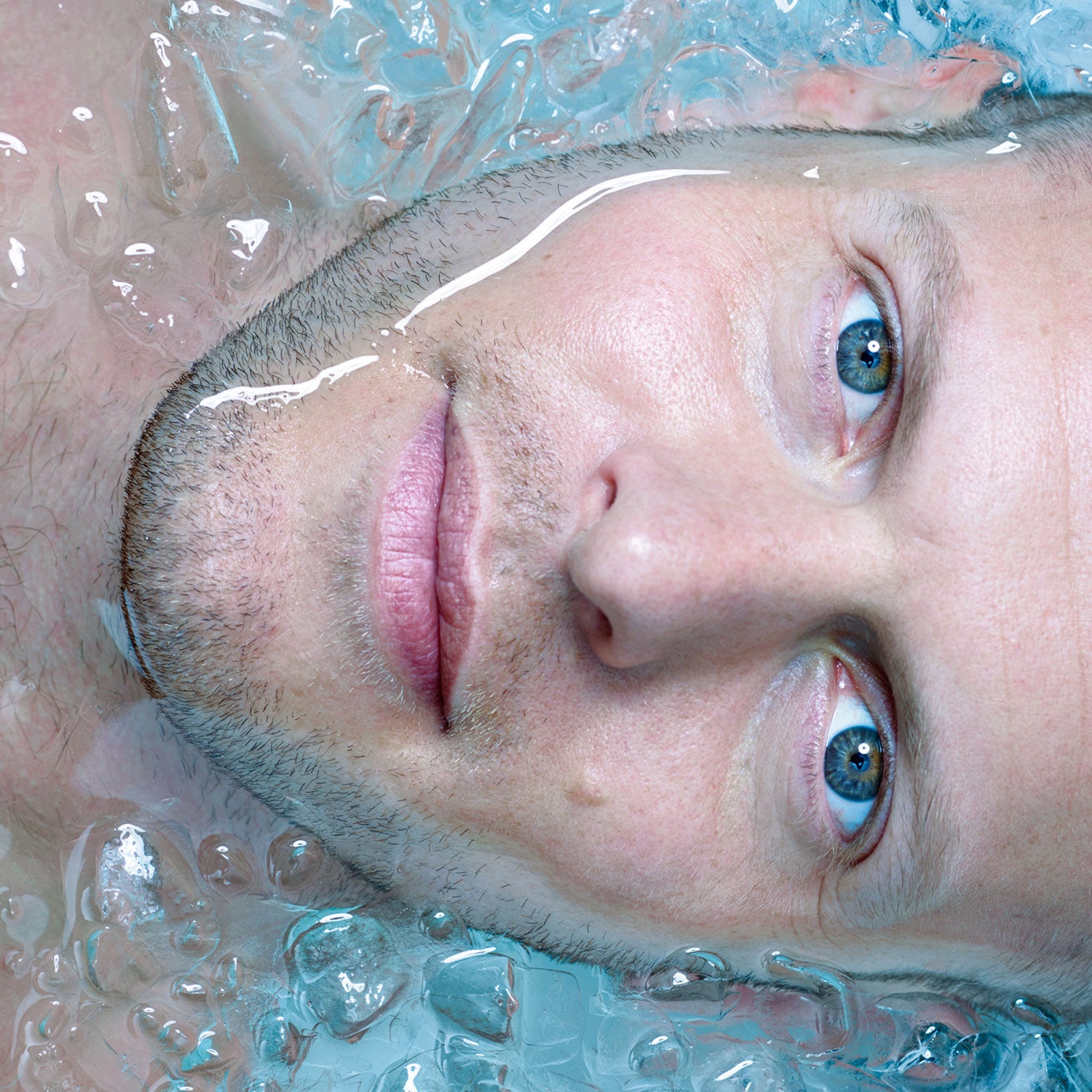
 127 radical tips for total health.
127 radical tips for total health. Expert interviewer Tim Ferriss has some tips.
Expert interviewer Tim Ferriss has some tips.